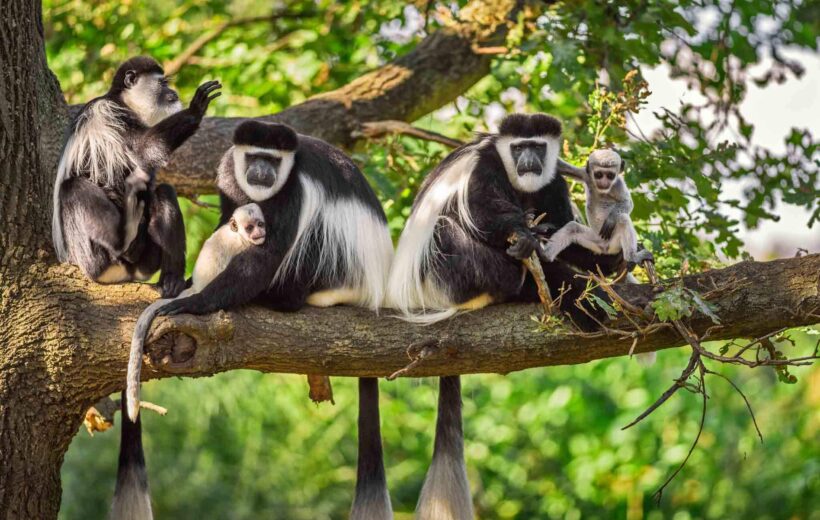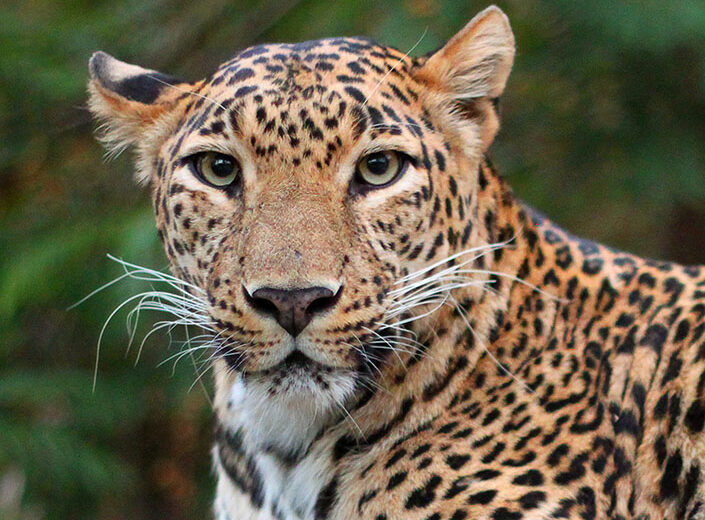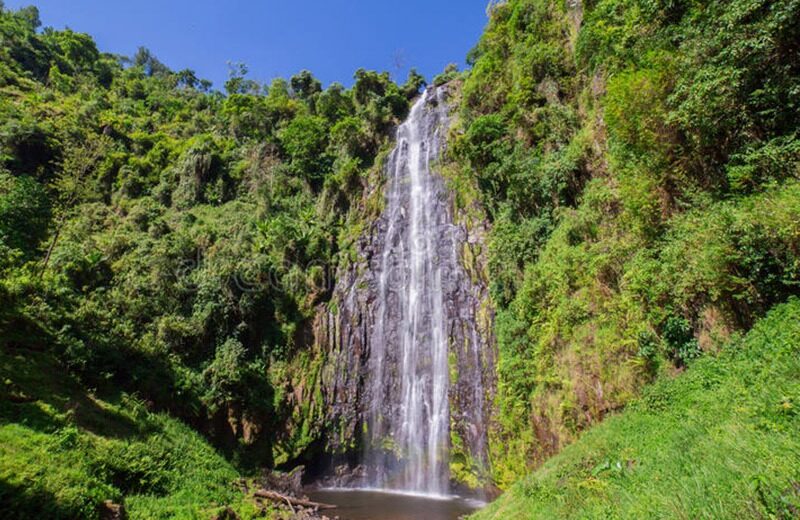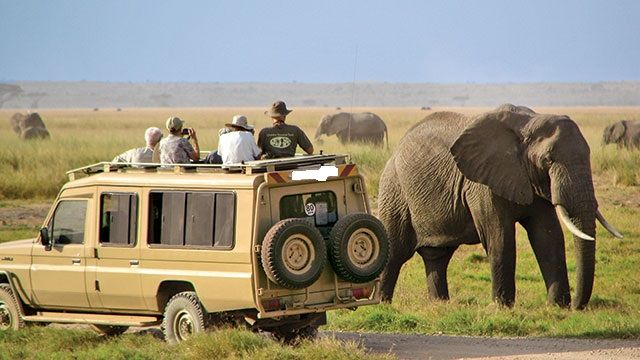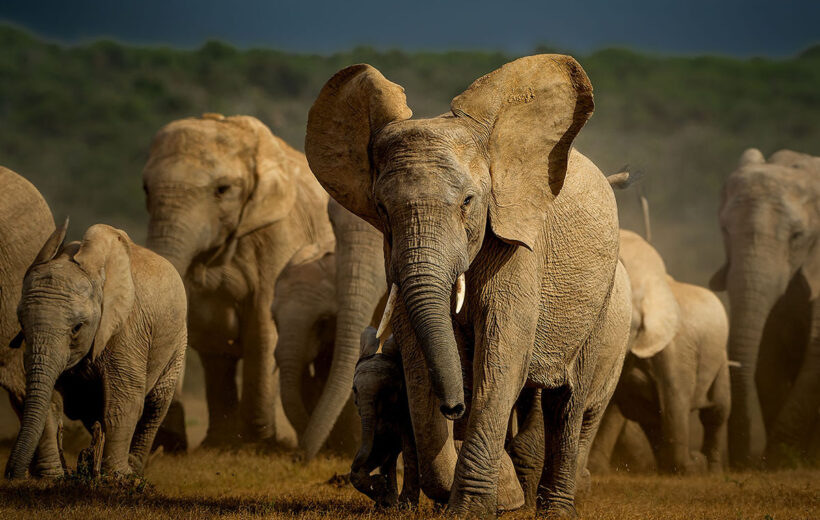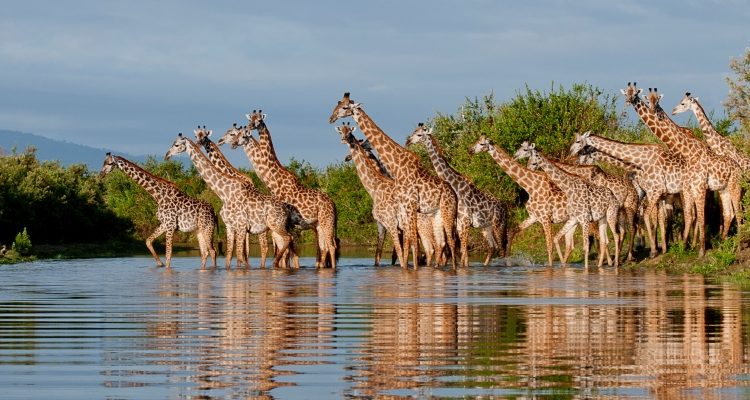Arusha National Park
Serengeti National Park
Arusha National Park offers a captivating blend of natural wonders and diverse wildlife, making it a unique and rewarding destination in northern Tanzania. Here's a more detailed overview of the park:
Arusha National Park is an ideal destination for those seeking a day trip from Arusha or a more relaxed safari experience. Its compact size, stunning scenery, and diverse ecosystems make it a fantastic introduction to the wildlife and landscapes of Tanzania.
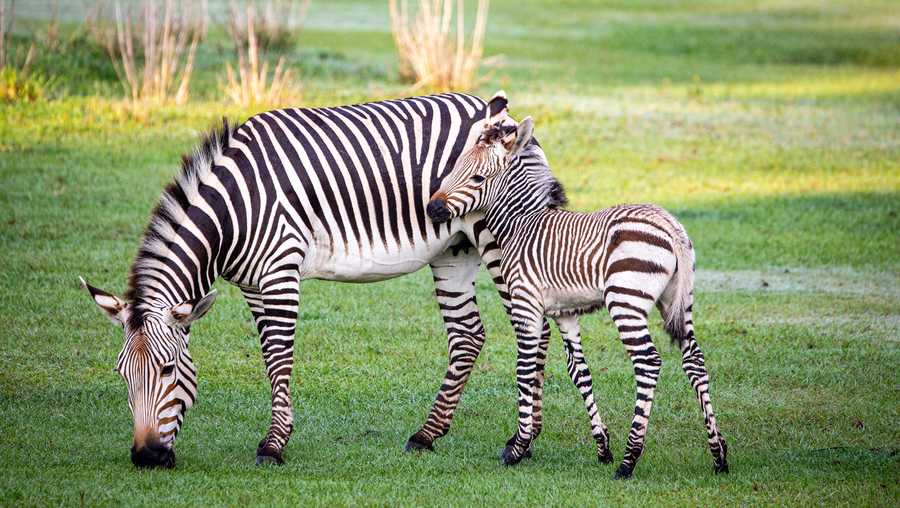
Key features of Arusha National Park
1. Unique Location: The park is conveniently located just 32 kilometers northeast of Arusha, making it easily accessible for visitors who are starting or ending their safaris in the region.
2. Remarkable Landscapes: Within the park, you'll find a blend of distinct ecosystems. From the lush montane rainforests on the slopes of Mount Meru to the rolling savannah and the tranquil lakes of Momela, the park offers a mesmerizing variety of landscapes to explore.
3. A Rich Biodiversity: Despite its smaller size compared to other Tanzanian parks, Arusha National Park is home to a diverse range of wildlife. You can encounter giraffes, zebras, buffaloes, warthogs, and an array of primates, including colobus monkeys. The park is also renowned for its abundant birdlife.
4. Mount Meru: The park's iconic feature is Mount Meru, the fifth-highest peak in Africa, which offers an excellent alternative to the more famous Kilimanjaro for hikers and trekkers.
5. Canoeing and Walking Safaris: Arusha National Park provides unique experiences such as canoeing on the Momela Lakes, allowing you to witness the park's wildlife from an entirely new perspective. Walking safaris are also available, allowing you to get up close and personal with the natural surroundings and wildlife.
heritage.
Best Time to Visit
- Overview
- What To Do
- Dry Season
- Birdwatching
- Horse Riding
- Cultural Experiences
- Avoiding Crowds
- Accommodation
- How to Access Arusha NP
The best time to visit Serengeti National Park depends on your interests, whether you want to witness the Great Migration, focus on game viewing, enjoy birdwatching, or experience cultural interactions. Each season offers its own unique experiences, so plan your visit based on your preferences and priorities.
BEST TIME TO VISIT THE SERENGETI NATIONAL PARK
January to February:
-
- This marks the beginning of Tanzania’s green season, making it an excellent time for birdwatching as migratory bird species are present.
-
- The famous Great Wildebeest Migration concentrates in the Ndutu area during these months, as it’s calving season when wildebeests give birth.
March:
-
- March is a transitional period, with the weather being uncertain, as it’s neither clearly dry nor the start of the rainy season.
-
- It’s almost the end of the wildebeest calving season in the Ndutu area.
April to May:
-
- These months are the rainy season, making it challenging to move around and enjoy the sun.
-
- The migration is expected to be in the south or central Serengeti.
-
- Fewer travelers visit during this period.
June to August:
-
- This is the beginning of the dry season and the peak season for safari visitors.
-
- In June, the Great Migration crosses the Grumeti River in the western Serengeti.
-
- The Great Migration makes its way north toward the Mara River for dramatic river crossings into the Masai Mara Reserve.
September to October:
-
- Still part of the dry season, these months see a reduction in the number of travelers.
-
- The Great Migration is expected to be in the Maasai Mara in Kenya.
November to December:
-
- This period experiences short rains.
-
- There are few travelers, with a small peak season from late December to early January.
-
- The migration returns, making its way to the south Serengeti and north Ngorongoro.
What to Do in Arusha National Park:
- Trekking Mount Meru: Standing at 4,566 meters, Mount Meru is Tanzania’s second-highest mountain and Africa’s fourth-highest. The views from its summit are truly spectacular, and hiking up Meru is a thrilling adventure that provides a sense of achievement.
- Horseback Riding: Arusha National Park offers visitors the unique opportunity to explore its diverse landscapes on horseback. Riding through these environments, from mountains to plains, forests, waterfalls, and craters, is an extraordinary way to experience wildlife and nature.
- Canoeing on Momella Lakes: Paddle silently in two-man canoes on the serene Momella Lakes. This allows you to enjoy waterside game viewing, offering a unique perspective of the park’s wildlife.
- Birdwatching: Arusha National Park is a haven for birdwatchers, with over 400 species, both resident and migratory. The park hosts a diverse range of waterfowl and other species, making it a fantastic birdwatching destination.
- Walking Safaris: The best way to truly connect with the African wilderness is on foot. The park’s dramatic scenery will captivate you as you journey from the base of Mount Meru to the soda lakes of Momella, which are shallow and alkaline, surrounded by colorful algae.
- Game Drives: The park offers game drives, where you can explore and observe wildlife from the comfort of a 4×4 safari vehicle. A knowledgeable guide will accompany you, ensuring a rich safari experience.
For optimal game viewing, consider visiting during the dry season from late June to October. The animals congregate around water sources, making them easier to spot.
- For the best game viewing and wildlife sightings, consider visiting during the dry season, which typically runs from late June to October. During this time, the vegetation is less dense, and animals congregate around water sources, making them easier to spot.
- The dry season is also when predators are particularly active, as they take advantage of the concentrated prey.
Birdwatchers will find the wet season (November to May) rewarding, as migratory bird species are present.
- Birdwatchers should plan their visit during the wet season, which spans from November to May. Migratory bird species are present during this time, offering excellent opportunities for birdwatching.
- The lush green landscapes during the wet season also provide a beautiful backdrop for photography.
Horseback riding in Arusha National Park offers a unique and exhilarating way to explore the park’s scenic beauty and diverse landscapes. While the park is more commonly associated with game drives and walking safaris, horse riding provides an alternative and immersive experience for nature and adventure enthusiasts. Here’s an overview of horse riding in Arusha National Park:
1. Guided Horseback Safaris: Several tour operators in the Arusha area offer guided horseback safaris within and around Arusha National Park. These safaris are led by experienced guides who are familiar with the park’s terrain and can provide insights into the park’s wildlife, flora, and fauna.
2. Scenic Diversity: Horseback riding in Arusha National Park allows you to explore the park’s varied ecosystems, from lush montane forests to open savannah plains and crater lakes. The ability to traverse diverse landscapes on horseback offers a unique and up-close perspective of the park’s natural beauty.
3. Close Wildlife Encounters: While you may not get as close to big game as you would on a traditional safari vehicle, horse riding allows you to approach wildlife more quietly and intimately. You can often spot giraffes, zebras, and various antelope species from horseback. The thrill of being on the same level as the wildlife is a memorable experience.
4. Flexibility and Freedom: Horseback riding provides a sense of freedom and flexibility in your exploration. You can navigate narrower trails and reach areas that may be inaccessible by vehicle, making it a fantastic way to escape the crowds and discover hidden corners of the park.
5. Suitable for All Levels: Whether you’re an experienced rider or a novice, there are horseback riding options available to suit your skill level. Operators typically have a range of well-trained horses, and they can tailor the experience to your riding ability.
6. Half-Day and Full-Day Options: Depending on your preference and schedule, you can choose between half-day or full-day horseback riding excursions. These outings often include stops for picnics or rest breaks in scenic locations within the park.
7. Cultural Interaction: Some horseback riding tours may include visits to local Maasai or Meru villages, providing you with an opportunity to engage with the local communities and learn about their traditional cultures.
8. Safety: Safety is a priority, and operators provide riders with helmets and safety instructions. The guides are trained to ensure a safe and enjoyable experience.
Before embarking on a horseback riding safari in Arusha National Park, it’s essential to book your excursion with a reputable tour operator who specializes in this activity. Additionally, it’s advisable to wear comfortable clothing, sturdy footwear, and sunscreen for sun protection.
Horse riding in Arusha National Park offers a thrilling and unique way to connect with nature and experience the park’s remarkable landscapes and wildlife. It’s an adventure that combines the excitement of a safari with the freedom of exploring on horseback, making it a memorable addition to your Tanzanian travel itinerary
While Arusha National Park is primarily renowned for its stunning landscapes and diverse wildlife, it also offers a unique cultural experience that allows visitors to engage with the local communities and learn about the traditional cultures of the region. Here’s an overview of the cultural experiences you can enjoy in Arusha National Park:
1. Cultural Tours: Several cultural tourism programs have been developed in the vicinity of Arusha National Park. These tours often involve visits to Maasai and Meru villages, where you can interact with the residents and gain insights into their traditional way of life. You’ll have the opportunity to observe cultural rituals, see traditional dances, and visit local homes.
2. Maasai Communities: The Maasai people are one of the most well-known indigenous tribes in East Africa. In the areas surrounding Arusha National Park, you can engage in cultural interactions with the Maasai. Learn about their distinctive clothing, jewelry, and nomadic lifestyle, and gain a deeper understanding of their customs and traditions.
3. Arts and Crafts: The towns near the park, including Arusha itself, are known for their vibrant art and craft scenes. You can explore local markets and art cooperatives to purchase traditional crafts, including beadwork, textiles, wood carvings, and more. These make for meaningful souvenirs and support local artisans.
4. Local Cuisine: Discover the flavors of Tanzanian cuisine by sampling local dishes at restaurants or during your cultural tours. Popular foods include pilau (spiced rice), ugali (maize porridge), and nyama choma (grilled meat). Engaging with local culinary traditions can be a delightful cultural experience.
5. Historical Sites: In the town of Arusha, you can visit historical sites such as the Old German Boma, a former German colonial administrative building, which provides insights into the colonial history of the region.
6. Cultural Festivals: Depending on the timing of your visit, you might have the opportunity to attend cultural festivals and events that showcase traditional music, dance, and rituals. These celebrations offer an authentic look into the local culture.
7. Local Guides: When you embark on safaris or nature walks in Arusha National Park, many guides are from local communities. They often share their cultural knowledge and stories, enriching your wildlife experiences with cultural insights.
Cultural interactions in and around Arusha National Park provide a well-rounded perspective of the region’s heritage and the daily lives of its people. These experiences offer a deeper appreciation of the cultural tapestry that complements the park’s stunning natural beauty and diverse wildlife.
If you prefer to avoid larger crowds, consider visiting during the shoulder seasons, which are the transitional periods between the wet and dry seasons (March to May and November). Accommodation prices may also be more favorable during these times.
Accommodation options in and around Arusha National Park cater to a range of preferences and budgets. Whether you’re looking for luxury lodges, mid-range hotels, or budget-friendly campsites, there are choices that will make your visit comfortable and memorable. Here’s an overview of the accommodation options in Arusha National Park:
1. Luxury Lodges:
-
Arusha Serena Hotel: This lodge combines luxury with stunning views of Mount Meru and lush gardens. It offers spacious rooms, fine dining, a swimming pool, and a spa.
-
The African Tulip: A boutique hotel featuring elegant rooms, an outdoor pool, a restaurant, and a well-manicured garden. It’s known for its warm hospitality and serene ambiance.
2. Mid-Range Accommodations:
-
Mount Meru Game Lodge and Sanctuary: This lodge offers comfortable rooms and cottages nestled within a sanctuary where you can spot wildlife. It’s an excellent choice for nature lovers.
-
Karama Lodge: Perched on a hill, this eco-friendly lodge provides picturesque views of Mount Meru and offers cozy accommodations in a serene environment.
3. Budget-Friendly Options:
-
Momella Wildlife Lodge: A budget-friendly lodge that provides comfortable rooms and the opportunity to spot wildlife around the lodge. It’s a great choice for travelers on a tighter budget.
-
Hatari Lodge: While it has some higher-end options, Hatari Lodge also offers more affordable accommodation. It’s known for its connection to the classic movie “Hatari!” starring John Wayne.
4. Campsites:
-
Tanzanian National Parks Campsites: Inside Arusha National Park, there are designated campsites for those who prefer a closer connection to nature. Campers need to bring their own camping gear.
-
Private Campsites: Some tour operators and lodges in the vicinity of the park offer private campsites with facilities and services for guests who wish to camp but prefer some comfort and assistance.
5. Cultural Stays:
- Cultural Lodges: For a unique experience, you can choose to stay in a cultural lodge in a nearby Maasai or Meru village. These lodges offer traditional accommodations and opportunities to interact with the local communities.
6. Safari Lodges and Tented Camps:
- While not within the national park, several safari lodges and tented camps in the nearby areas, such as West Kilimanjaro and the outskirts of Arusha, provide accommodations in beautiful settings and offer safari packages that include visits to Arusha National Park.
When planning your stay in Arusha National Park, it’s recommended to book accommodations well in advance, especially during the peak tourist seasons. The park’s proximity to Arusha, a major city in Tanzania, means there are various choices available to suit different tastes and budgets. Whether you prefer luxury lodges with all amenities or a more rustic camping experience, you’ll find suitable options to enhance your visit to this captivating national park.
To access Arusha National Park in the northern circuit of Tanzania, you have two primary transportation options:
1. Road: Arusha National Park is conveniently located just a 45-minute drive from the main starting point for safaris in northern Tanzania. To reach the park, you can use various road transportation methods available in the area.
2. Air: For a faster and more direct approach, you can choose to fly into Kilimanjaro International Airport (KIA), which is approximately 46 kilometers or 29 miles away from Arusha. The airport provides convenient access to the park.
The presence of airstrips within the park itself further simplifies the travel process, allowing visitors to arrive and depart efficiently, making Arusha National Park easily accessible by both road and air travel.

